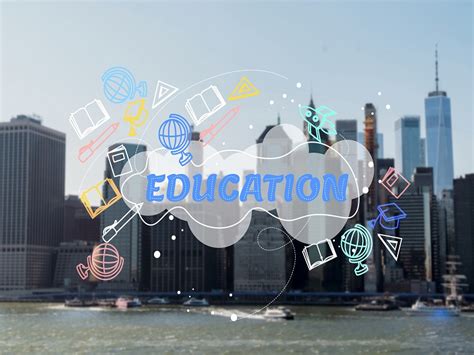The intersection of education and technology has revolutionized the way we learn, making it more accessible, engaging, and effective. Technology has become an integral part of the educational landscape, and its impact is being felt in various ways. In this article, we'll explore five ways education loves all technology, highlighting the benefits, working mechanisms, and practical examples.
1. Personalized Learning Experiences

Technology has enabled educators to create personalized learning experiences tailored to individual students' needs. Adaptive learning software, learning management systems, and data analytics tools help teachers track student progress, identify knowledge gaps, and adjust their instruction accordingly. This approach ensures that students receive the right amount of challenge and support, leading to improved academic outcomes.
For instance, the Khan Academy's adaptive learning platform uses machine learning algorithms to adjust the difficulty level of math problems based on a student's performance. This personalized approach helps students learn at their own pace, filling knowledge gaps and building confidence.
Benefits of Personalized Learning
- Improved student engagement and motivation
- Enhanced academic achievement
- Increased efficiency for teachers
- Better use of instructional time
2. Access to Quality Educational Resources

The internet has democratized access to quality educational resources, making it possible for students to learn from anywhere, at any time. Online libraries, educational websites, and open educational resources (OERs) provide a wealth of information, videos, images, and interactive materials that can be used to support teaching and learning.
For example, the Smithsonian's National Museum of Natural History offers a range of online resources, including 3D models, videos, and interactive simulations, that can be used by teachers to create engaging lesson plans.
Benefits of Access to Quality Educational Resources
- Increased accessibility to educational content
- Improved student outcomes
- Enhanced teacher professional development
- Better use of technology to support teaching and learning
3. Enhanced Collaboration and Communication

Technology has enabled students, teachers, and parents to communicate and collaborate more effectively. Online platforms, social media, and messaging apps facilitate the exchange of ideas, feedback, and resources, making it easier for stakeholders to work together.
For instance, Google Classroom allows teachers to create and distribute assignments, provide feedback, and track student progress, while also enabling students to collaborate on group projects and share resources.
Benefits of Enhanced Collaboration and Communication
- Improved student-teacher communication
- Enhanced parent-teacher communication
- Increased collaboration among students
- Better use of technology to support teamwork and communication
4. Virtual and Augmented Reality Learning Experiences

Virtual and augmented reality technologies are revolutionizing the way we learn by providing immersive and interactive experiences. These technologies can transport students to new environments, simulate real-world scenarios, and make complex concepts more engaging and accessible.
For example, zSpace's virtual reality platform allows students to explore the human body, conduct virtual labs, and interact with 3D models, making learning more engaging and effective.
Benefits of Virtual and Augmented Reality Learning Experiences
- Improved student engagement and motivation
- Enhanced learning outcomes
- Increased accessibility to complex concepts
- Better use of technology to support experiential learning
5. Data-Driven Decision Making

Technology has enabled educators to collect and analyze vast amounts of data on student learning, making it possible to identify trends, patterns, and areas for improvement. This data can inform instruction, guide professional development, and drive decision-making at the school and district levels.
For instance, the National Center for Education Statistics' DataLab provides educators with access to a range of data tools and resources, enabling them to analyze and visualize data to inform instruction and improve student outcomes.
Benefits of Data-Driven Decision Making
- Improved instructional decision-making
- Enhanced student outcomes
- Increased efficiency and effectiveness
- Better use of technology to support data-driven decision-making






In conclusion, technology has transformed the educational landscape, providing numerous benefits, improving student outcomes, and enhancing the teaching and learning experience. By embracing these technological advancements, educators can create personalized learning experiences, provide access to quality educational resources, facilitate collaboration and communication, offer virtual and augmented reality learning experiences, and make data-driven decisions.
We'd love to hear from you! Share your thoughts on how technology has impacted education in the comments below.
